-
 Bitcoin
Bitcoin $107,341.7259
0.15% -
 Ethereum
Ethereum $2,438.6204
0.70% -
 Tether USDt
Tether USDt $1.0003
-0.02% -
 XRP
XRP $2.1866
1.94% -
 BNB
BNB $649.0952
0.36% -
 Solana
Solana $150.9602
5.63% -
 USDC
USDC $0.9999
0.00% -
 TRON
TRON $0.2742
0.40% -
 Dogecoin
Dogecoin $0.1645
1.93% -
 Cardano
Cardano $0.5669
1.18% -
 Hyperliquid
Hyperliquid $37.8286
4.19% -
 Bitcoin Cash
Bitcoin Cash $491.4669
-2.74% -
 Sui
Sui $2.8150
3.06% -
 Chainlink
Chainlink $13.4184
2.91% -
 UNUS SED LEO
UNUS SED LEO $9.0809
0.27% -
 Avalanche
Avalanche $18.0295
2.60% -
 Stellar
Stellar $0.2396
1.19% -
 Toncoin
Toncoin $2.8587
0.13% -
 Shiba Inu
Shiba Inu $0.0...01160
2.59% -
 Litecoin
Litecoin $86.4192
1.45% -
 Hedera
Hedera $0.1486
1.19% -
 Monero
Monero $308.4324
0.87% -
 Polkadot
Polkadot $3.4202
1.43% -
 Bitget Token
Bitget Token $4.6436
-0.34% -
 Dai
Dai $0.9998
-0.02% -
 Ethena USDe
Ethena USDe $1.0002
0.00% -
 Uniswap
Uniswap $7.1527
3.29% -
 Pi
Pi $0.5357
-8.45% -
 Pepe
Pepe $0.0...09588
4.61% -
 Aave
Aave $259.9759
0.81%
What is Hedera Hashgraph?
Hedera Hashgraph is a public DLT using a novel hashgraph consensus for high throughput and low latency. Unlike blockchain, its DAG structure enables faster transactions, governed by a council of 39 organizations, and utilizes the HBAR cryptocurrency.
Mar 12, 2025 at 02:20 am

Key Points:
- Hedera Hashgraph is a public, distributed ledger technology (DLT) that uses a novel consensus algorithm called "hashgraph" to achieve high throughput, low latency, and fairness.
- Unlike blockchain, which uses a chain of blocks, hashgraph uses a directed acyclic graph (DAG) to record transactions. This allows for significantly faster transaction processing.
- Hedera Hashgraph is governed by a council of 39 prominent organizations, ensuring stability and trust.
- The Hedera network uses the HBAR cryptocurrency for transaction fees and network operation.
- Hedera offers a range of tools and services for developers to build decentralized applications (dApps).
What is Hedera Hashgraph?
Hedera Hashgraph is a public, distributed ledger technology (DLT) that offers a unique approach to consensus compared to traditional blockchain networks. Instead of relying on a chain of blocks, Hedera utilizes a hashgraph data structure, a directed acyclic graph (DAG), to record and verify transactions. This fundamental difference contributes to its superior speed and efficiency. The platform aims to provide a secure, fast, and fair environment for building and deploying decentralized applications (dApps).
How does the Hashgraph Consensus Algorithm Work?
The core of Hedera's innovation lies in its hashgraph consensus algorithm. This algorithm leverages gossip protocols, allowing nodes to efficiently share transaction information within the network. This gossip protocol enables a high degree of fault tolerance and resilience against attacks. Each node collects information from its peers and constructs a partial view of the transaction history. Through a process called virtual voting, the network quickly agrees on the order of transactions, ensuring finality and preventing double-spending.
What are the Advantages of Hedera Hashgraph over Blockchain?
Compared to blockchain technologies, Hedera Hashgraph boasts several key advantages. Its asynchronous Byzantine Fault Tolerance (aBFT) mechanism ensures high throughput and low latency, enabling significantly faster transaction processing. The hashgraph structure eliminates the need for energy-intensive mining processes, resulting in greater energy efficiency. Furthermore, its inherent fairness ensures that all transactions are processed equitably, regardless of the node's influence.
How is Hedera Governed?
Unlike many cryptocurrencies with decentralized governance models, Hedera Hashgraph is governed by a council of 39 prominent organizations. This council is responsible for maintaining the network's stability and integrity. Membership in the council is carefully selected, ensuring a balanced representation of various industries and geographical locations. This unique governance structure aims to provide stability and trust while preventing potential conflicts inherent in entirely decentralized systems.
What is HBAR and its Use Cases?
HBAR is the native cryptocurrency of the Hedera network. It serves as the fuel for the ecosystem, used to pay for transaction fees, network usage, and other services within the Hedera ecosystem. Beyond transactional purposes, HBAR can also be utilized for staking, contributing to the network's security and governance. The token's value is intrinsically linked to the growth and adoption of the Hedera platform.
How can Developers Build on Hedera?
Hedera provides a robust suite of developer tools and resources to facilitate the creation of dApps. The platform offers SDKs (Software Development Kits) for various programming languages, allowing developers to easily integrate with the network. Hedera also provides comprehensive documentation and community support to guide developers through the development process.
- SDKs: Hedera offers SDKs in popular languages such as Java, JavaScript, Go, and Python.
- API Documentation: Comprehensive documentation is available to help developers understand the network's functionalities.
- Community Support: A vibrant community of developers and enthusiasts offers assistance and support.
- Hedera Tooling: Hedera provides various tools to aid in deployment and management of dApps.
What are the Use Cases for Hedera Hashgraph?
Hedera's high throughput and low latency make it suitable for a wide range of applications. Some prominent use cases include:
- Supply Chain Management: Tracking goods and materials throughout the supply chain with high accuracy and efficiency.
- Digital Identity: Secure and verifiable digital identities for individuals and organizations.
- Decentralized Finance (DeFi): Building fast and efficient DeFi applications with reduced transaction costs.
- Gaming: Creating immersive and scalable gaming experiences.
- Internet of Things (IoT): Securely connecting and managing IoT devices.
Hedera Hashgraph vs. Other DLTs:
While several DLTs exist, Hedera distinguishes itself through its unique hashgraph consensus mechanism. Compared to proof-of-work blockchains like Bitcoin, Hedera offers significantly improved speed and efficiency. When contrasted with permissioned blockchains, Hedera maintains the transparency and security of a public network while achieving superior performance. Its governance model also offers a level of stability and trust not always found in fully decentralized systems.
Common Questions and Answers:
Q: Is Hedera Hashgraph a public or private blockchain?
A: Hedera Hashgraph is a public distributed ledger, meaning anyone can participate in the network and access its data. However, it is governed by a council, a key differentiator from completely decentralized systems.
Q: How secure is Hedera Hashgraph?
A: Hedera's aBFT consensus mechanism provides a high level of security, making it resistant to various attacks, including double-spending and Sybil attacks. The governance council also plays a role in maintaining the network's security.
Q: What are the transaction fees on Hedera Hashgraph?
A: Transaction fees on Hedera are paid in HBAR and vary depending on factors such as transaction size and network congestion. Generally, the fees are relatively low compared to some other blockchain networks.
Q: How does Hedera Hashgraph achieve its high throughput?
A: The hashgraph consensus algorithm, with its gossip protocol and efficient virtual voting, enables Hedera to process thousands of transactions per second, significantly higher than many blockchain networks.
Q: What is the role of the Hedera Governing Council?
A: The Hedera Governing Council oversees the network's operation and evolution, ensuring its stability, security, and adherence to its principles. Its members are selected from prominent organizations across various sectors.
Q: How does Hedera compare to other Layer-1 solutions?
A: Compared to other Layer-1 solutions, Hedera focuses on providing a high-throughput, low-latency platform with a strong emphasis on fairness and enterprise-grade security, differentiating it from those primarily focused on decentralized governance or scalability through sharding.
Disclaimer:info@kdj.com
The information provided is not trading advice. kdj.com does not assume any responsibility for any investments made based on the information provided in this article. Cryptocurrencies are highly volatile and it is highly recommended that you invest with caution after thorough research!
If you believe that the content used on this website infringes your copyright, please contact us immediately (info@kdj.com) and we will delete it promptly.
- Trump, Bitcoin, and Peter Schiff: A New York Minute on Crypto Chaos
- 2025-06-29 12:30:12
- BTC Price, BlackRock ETF, Fed Signals: Decoding the Crypto Crossroads
- 2025-06-29 12:30:12
- SEI Price Skyrockets Amid ETF Hype and Bullish Uptrend: What's Next?
- 2025-06-29 12:50:11
- Bitcoin Mining, Cryptocurrency, and Blockchain: A New York State of Mind
- 2025-06-29 13:10:11
- Dogecoin's Double Bottom: Is an Explosive Move Imminent?
- 2025-06-29 12:55:11
- Kitten Craze Online: Hunting for the Purr-fect Coin Purse
- 2025-06-29 10:30:12
Related knowledge
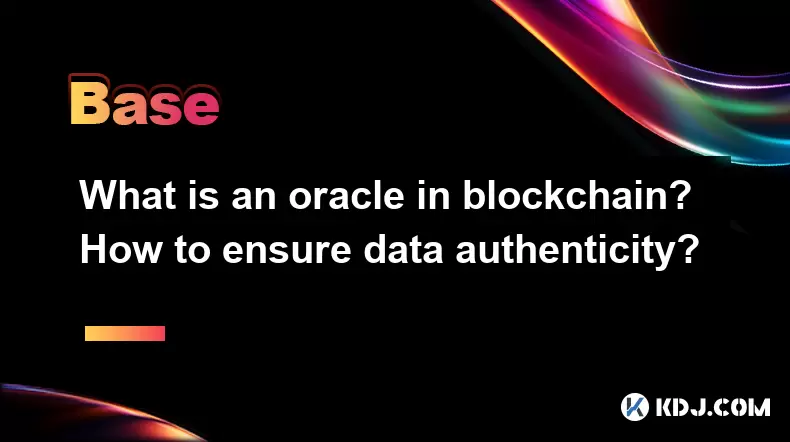
What is an oracle in blockchain? How to ensure data authenticity?
Jun 19,2025 at 08:49pm
Understanding the Role of an Oracle in BlockchainIn the context of blockchain technology, an oracle serves as a bridge between the blockchain and external data sources. While blockchains are inherently secure and decentralized, they cannot access real-world information on their own. Oracles enable smart contracts to interact with off-chain data such as ...
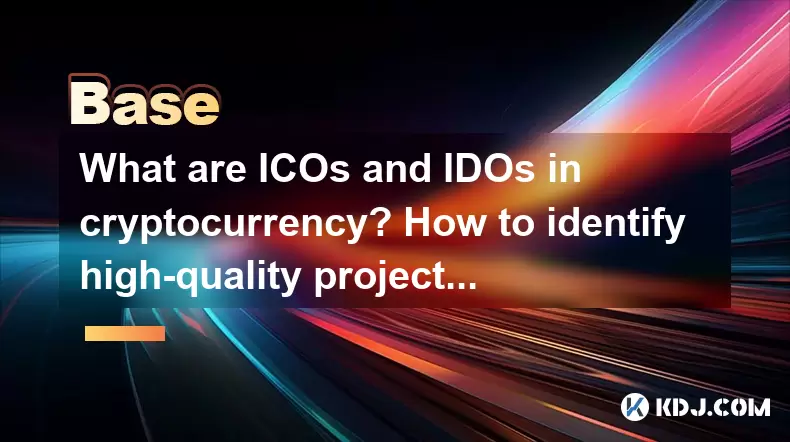
What are ICOs and IDOs in cryptocurrency? How to identify high-quality projects?
Jun 22,2025 at 11:49am
Understanding ICOs in CryptocurrencyInitial Coin Offerings (ICOs) are fundraising mechanisms used by cryptocurrency startups to raise capital for their projects. In an ICO, a company creates and sells its own tokens to investors in exchange for established cryptocurrencies like Bitcoin or Ethereum. The process typically involves the release of a whitepa...
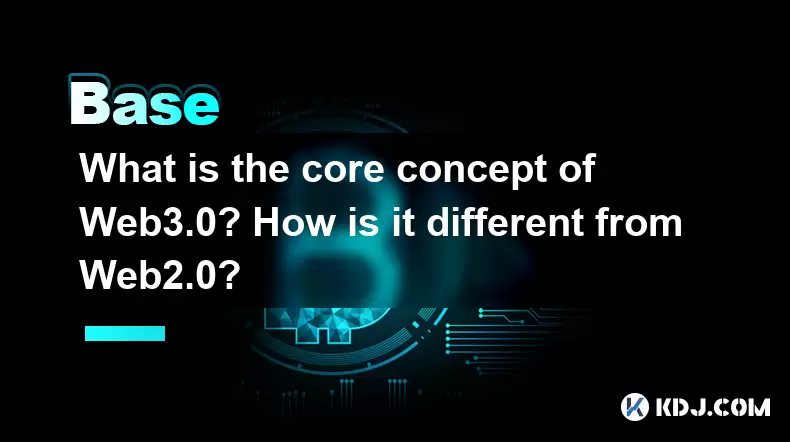
What is the core concept of Web3.0? How is it different from Web2.0?
Jun 21,2025 at 05:56pm
Decentralization as the Foundation of Web3.0The core concept of Web3.0 revolves around decentralization, which fundamentally challenges the centralized architecture of Web2.0. In Web3.0, control and ownership are distributed across a network rather than being held by a central authority or corporation. This is achieved primarily through blockchain techn...
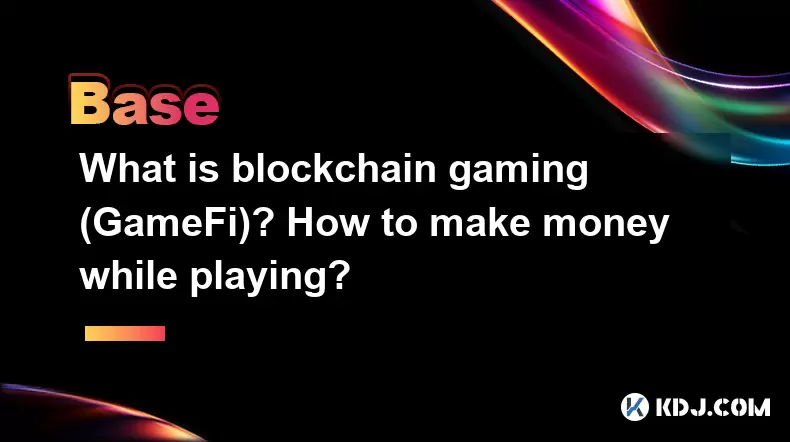
What is blockchain gaming (GameFi)? How to make money while playing?
Jun 20,2025 at 07:56am
Understanding Blockchain Gaming (GameFi)Blockchain gaming, often referred to as GameFi, is a fusion of blockchain technology and video games. It enables players to own in-game assets through non-fungible tokens (NFTs) and earn rewards via cryptocurrencies or token-based systems. Unlike traditional games where items are controlled by centralized develope...
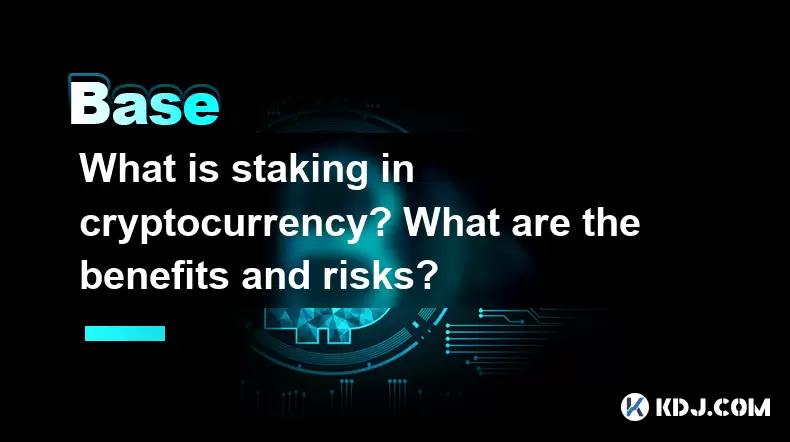
What is staking in cryptocurrency? What are the benefits and risks?
Jun 22,2025 at 10:01am
Understanding the Concept of Staking in CryptocurrencyStaking in cryptocurrency refers to the process of actively participating in transaction validation on a blockchain network that uses a Proof-of-Stake (PoS) consensus mechanism. Instead of miners competing to solve complex mathematical puzzles as in Proof-of-Work systems like Bitcoin, PoS blockchains...
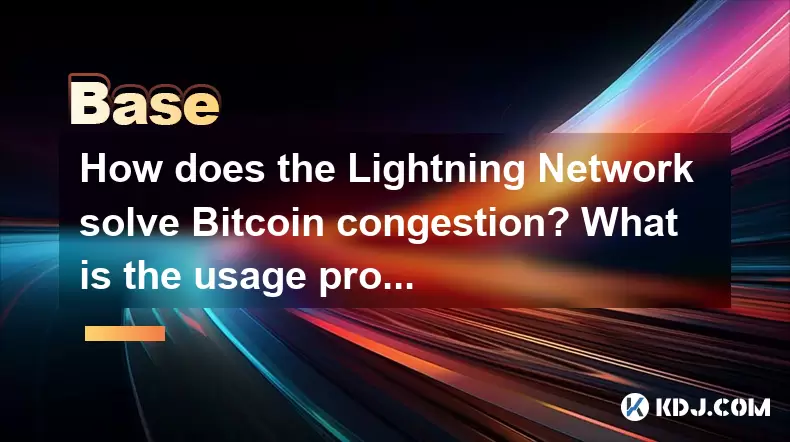
How does the Lightning Network solve Bitcoin congestion? What is the usage process?
Jun 23,2025 at 06:21pm
Understanding Bitcoin Network CongestionBitcoin, as a decentralized digital currency, operates on a blockchain that records every transaction in a public ledger. Each block has a limited size, typically 1 megabyte, which allows for only a certain number of transactions per second (TPS). When the number of transactions increases, the network becomes cong...

What is an oracle in blockchain? How to ensure data authenticity?
Jun 19,2025 at 08:49pm
Understanding the Role of an Oracle in BlockchainIn the context of blockchain technology, an oracle serves as a bridge between the blockchain and external data sources. While blockchains are inherently secure and decentralized, they cannot access real-world information on their own. Oracles enable smart contracts to interact with off-chain data such as ...

What are ICOs and IDOs in cryptocurrency? How to identify high-quality projects?
Jun 22,2025 at 11:49am
Understanding ICOs in CryptocurrencyInitial Coin Offerings (ICOs) are fundraising mechanisms used by cryptocurrency startups to raise capital for their projects. In an ICO, a company creates and sells its own tokens to investors in exchange for established cryptocurrencies like Bitcoin or Ethereum. The process typically involves the release of a whitepa...

What is the core concept of Web3.0? How is it different from Web2.0?
Jun 21,2025 at 05:56pm
Decentralization as the Foundation of Web3.0The core concept of Web3.0 revolves around decentralization, which fundamentally challenges the centralized architecture of Web2.0. In Web3.0, control and ownership are distributed across a network rather than being held by a central authority or corporation. This is achieved primarily through blockchain techn...

What is blockchain gaming (GameFi)? How to make money while playing?
Jun 20,2025 at 07:56am
Understanding Blockchain Gaming (GameFi)Blockchain gaming, often referred to as GameFi, is a fusion of blockchain technology and video games. It enables players to own in-game assets through non-fungible tokens (NFTs) and earn rewards via cryptocurrencies or token-based systems. Unlike traditional games where items are controlled by centralized develope...

What is staking in cryptocurrency? What are the benefits and risks?
Jun 22,2025 at 10:01am
Understanding the Concept of Staking in CryptocurrencyStaking in cryptocurrency refers to the process of actively participating in transaction validation on a blockchain network that uses a Proof-of-Stake (PoS) consensus mechanism. Instead of miners competing to solve complex mathematical puzzles as in Proof-of-Work systems like Bitcoin, PoS blockchains...

How does the Lightning Network solve Bitcoin congestion? What is the usage process?
Jun 23,2025 at 06:21pm
Understanding Bitcoin Network CongestionBitcoin, as a decentralized digital currency, operates on a blockchain that records every transaction in a public ledger. Each block has a limited size, typically 1 megabyte, which allows for only a certain number of transactions per second (TPS). When the number of transactions increases, the network becomes cong...
See all articles

























































































